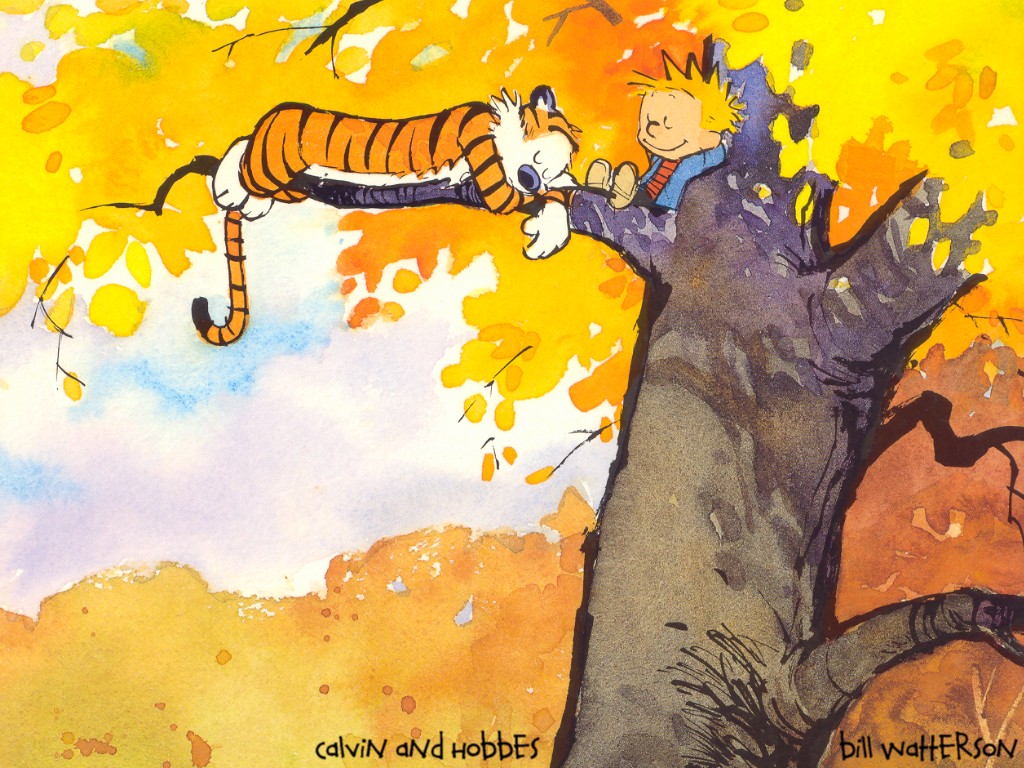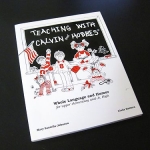Comics in the Classroom

In a visual era where kids excel at operating smart phones and master the latest playstation with ease, it is high time that our teaching methods incorporate innovative methods to stimulate the minds of this iPad generation.
One such unconventional teaching tool that can be used for a variety of language and discussion activities are comic strips. As a visual and verbal medium, it engages students and its uniqueness and appeal lies in its ability to highlight and illustrate a diverse range of contemporary topics and issues.

Bill Watterson’s iconic Calvin and Hobbes comic strip is a fine example and has been embraced in the form of “Teaching with Calvin and Hobbes” by Linda Holman and Mary Santella-Johnson is a highly valued collectible children textbook and a rare piece of officially licensed merchandise.

Written by a speech-language pathologist and a learning disabilities educator, “Teaching with Calvin and Hobbes” is a language textbook for children studying between grades 4-8. The 200 page book reprints fifty-seven Calvin and Hobbes comic strips, organized into five units with six sections each.
Each unit begins with a series of comic strips that form a story. The strips in the units are:
“The Find” – Calvin discovers and assembles a dinosaur skeleton, of sorts. Hobbes renders a drawing of the creature.
“The Christmas Story” – As Calvin struggles to be good in anticipation of Santa’s arrival, he and Hobbes discuss the philosophy of law and the nature of belief.
“The Bug Collection” – Calvin forgets to do his homework, and rushes to complete it on the way to school. Susie gets sent to the principal’s office.
“The Report” – Calvin and Susie are assigned a joint homework project.
In each unit, questions for comprehension and discussion follow the comic strips. For example:

Do you think Calvin was disappointed when his mother brought him back to reality or do you think he always had an inkling that he was having fun with his imagination?
Can you think of a time when you were imagining or creating and your mom or dad brought you back to reality?
Were you disappointed to get back to reality?
The sections after each strip of every unit are as follows:
Vocabulary: Some vocabulary sections contain colloquial terms and figurative language, while others deal with more traditional vocabulary words. There are 3-4 activities in this section.
Comprehension: The comprehension section is pretty traditional and asks questions relating to the strip. This also has a few sections.

Behavior: As anyone who has read a Calvin and Hobbes strip knows, Calvin isn’t exactly the model of perfect behavior. The author tries to get students to think about why Calvin approaches situations the way he does and foster discussion over choice.
Humor: These sections deal with themes such as language, sarcasm, slap-stick, stand-up, and teasing.
Suggested Activities: They are extensions of the topic that unit’s strip talks about. For example, one strip’s unit is about bug collections and one of the suggested activities has to do with finding out more information about insects. The great thing about this section is that there are two or three main suggested activities in each section that are spelled out for you. However, the author also gives a list of other activities. These activities range from small to large. In the bug collection unit, she gives suggestions as small as surveying and graphing everyone’s favorite and least favorite insects to suggestions as large as making your own insect collection or reading James and the Giant Peach. Each unit is similarly full of suggestions.
Creative Writing: In the bug collection unit, the students get to write poetry. They write a cinquain and a haiku. Next they write about a time they forgot to complete and assignment or chore and the feelings they had. They also write a journal about Bug Collection day from the viewpoint of one of the people in the story. Last, they summarize the strip. The writing assignments in each unit are different, but there are several in each unit and they are similarly varied. Like in the Suggested Activities section, the author gives more creative writing suggestions in a list.
(Sources: Wikipedia, Amazon review by L.Jobe)

I’d give almost give an arm and a leg to have a copy of “Teaching with Calvin and Hobbes”. Nice find!
I know this is an old post, but I own one of these books (teaching with Calvin and Hobbes. Are you interested?
Hello,
Special educator from Greece here.
I hope you ‘re not just teasing.
I would be forever grateful if you could make the effort and take pictures of the book.
I know that there are a lot of pages but still, it has a big educational value.
I’m not interested in collecting it, but I’d rather use it for my learning disabled English Language Learners.
Please, please, please consider it.
I also would love it if someone would scan the book so others could use it for educational purposes and not just as a collection piece. It would be greatly appreciated if you own the book and would take the time to do this!